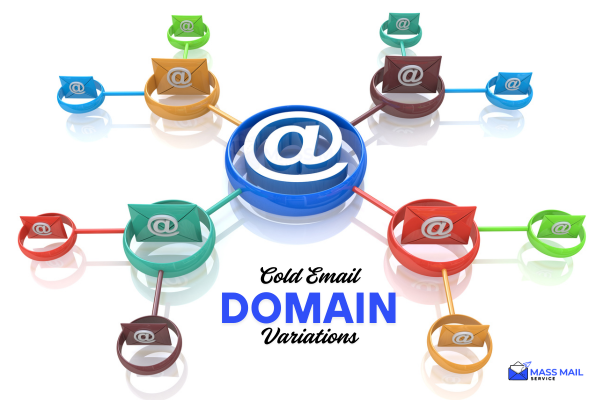Cold email marketing is one of the most effective ways for sales and marketing professionals to generate leads and build connections. However, the success of your cold outreach isn’t just about crafting the perfect email copy. One often overlooked but critical element is email deliverability. If your emails don’t land in the recipient’s inbox, even the most engaging subject line won’t matter.
That’s where cold email domain variations come in. Using alternative domain setups, you can boost email deliverability, protect your primary domain reputation, and scale your outreach campaigns effectively.
In this guide, we’ll explore everything you need to know, including what cold email domain variations are, why they’re essential, how to set them up, and advanced strategies to enhance your cold email performance.

Cold email domain variations refer to alternate domains or subdomains businesses use for cold email outreach campaigns instead of their primary domain. These variations help separate cold email activity from regular business communications to maintain a strong sender reputation.
These are entirely new domains that closely resemble your primary domain but use different top-level domains (TLDs).
Examples:
Subdomains are extensions of your primary domain, created to handle specific activities like outreach or sales.
Examples:
Using domain variations allows businesses to protect their primary domain while maximizing email deliverability. It prevents cold outreach from flagging your main domain for spam and keeps business-critical communications flowing smoothly.
When registering new domains for cold outreach, choosing the right TLD can make or break your email campaigns.
Recommended TLDs:
TLDs to Avoid:
Domains with spammy or suspicious TLDs are more likely to trigger spam filters, so stick with professional and trustworthy variations.
If you want to avoid investing in new domains altogether, subdomains can be an excellent alternative. They inherit the credibility of your main domain while keeping cold email activity separate.
Examples of effective subdomains:
Tailoring your domains to your industry can enhance trust and engagement with recipients.
SaaS Businesses: @yourcompany.software
E-commerce Brands: @yourcompany.shop
Real Estate Firms: @yourcompany.realty
Use action-oriented words in your domain to make your emails more engaging.
Examples:
These creative touches can build brand loyalty and improve click-through rates.
Purchase 2–5 additional domains from registrars like Namecheap, GoDaddy, or Google Domains. Use easy-to-remember variations that align with your primary domain.
Before sending any emails, configure essential DNS records to authenticate your domains and maximize deliverability.
SPF (Sender Policy Framework): Ensures unauthorized senders can’t use your domain.
DKIM (Domain Keys Identified Mail): Verifies email authenticity with cryptographic signatures.
DMARC (Domain-based Message Authentication, Reporting, and Conformance): Adds an extra layer of security to protect your recipients from phishing attempts.
🚫 Using free email providers like Gmail or Yahoo for cold outreach. Always use custom domains.
🚫 Skipping authentication (SPF, DKIM, DMARC). This drastically lowers deliverability.
🚫 Sending too many emails too quickly. Warm up your domains first.
🚫 Not rotating between domains. Overuse of one domain risks getting flagged for spam.
🚫 Using overly spammy domains like .xyz or .biz.
AI tools like Instantly.ai and Lemlist can automate domain rotation, manage multiple inboxes, and personalize emails at scale.
Dedicated IPs further improve deliverability by diversifying sending sources. Use services like Mass Mail Service, Mailgun and Hotsol for SMTP-based email distribution.
Create unique inbox names for different senders to personalize campaigns.
Examples:
This enhances engagement and makes your outreach more human-like.
Cold email domain variations are vital for marketers and sales professionals who want to scale their outreach while protecting their reputation and improving email deliverability.
Key takeaways from the guide:
Start Your Journey With Mass Mail Service Now!

Register now to get updates on promotions & coupons
© 2025. All Rights Reserved

Mass Mail Service offers everything
you need to create successful email marketing campaigns.